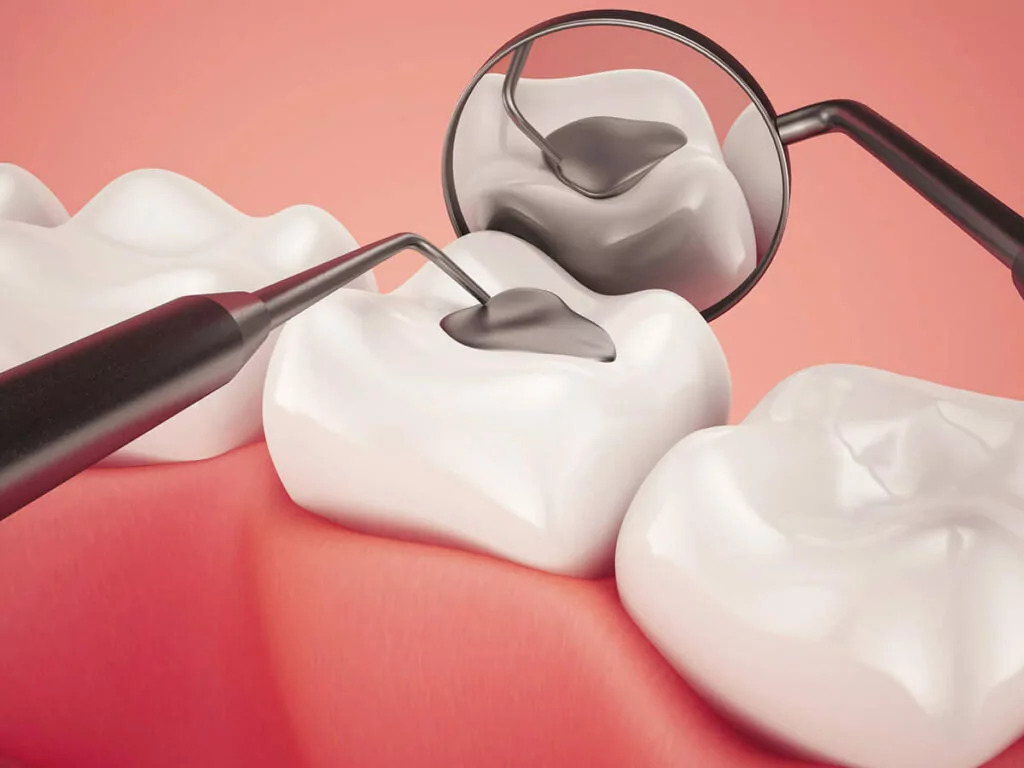Table of Contents
Tooth fillings are used by dentists to replace decayed parts of infected teeth and to keep the infection from spreading. That is, of course, the primary goal; the secondary goal is to alleviate the pain and discomfort that the patient may be experiencing as a result of the decay. Dentists typically remove decayed sections by drilling them out; this is the more traditional method. They use technology such as air abrasion or a laser to remove decayed parts. These methods are less painful and more precise. Special gels may also be used by a dentist to dissolve infected tissue.
Another reason a dentist might use tooth filling is to repair broken or cracked teeth. A tooth filling is a simple procedure that can be completed in a single sitting. The following are the most important things to know before getting a tooth filling.
What is the purpose of a tooth filling?
- Dental decay, also known as dental caries, causes teeth to become infected and disintegrate. Soft dental tissues deteriorate, resulting in cavities, which, while painful, can lead to serious dental problems if left untreated.
- The decayed portion of the tooth must be removed, and the resulting cavity must be filled.
- Tooth fillings, if not completed on time, can increase the risk of caries progression and necessitate a more complicated root canal treatment and dental crown.
- Only a dentist can determine which procedures are necessary, depending on the severity of the problem.
What You Should Know About Tooth Filling
Drilling: The decayed portion of the tooth is first drilled out. The sound of a drill and the thought of a drill machine inside one’s mouth can be frightening. However, it is a painless procedure that takes only a few minutes to complete.
Anesthesia administered locally: In extreme cases of sensitivity, the dentist may administer a shot to numb the area around the infected tooth. The patient loses all sensation in that area, including the teeth and gums, and feels no pain. The anesthesia takes effect for a few hours, during which time the dentist completes the procedure.
Cleaning the tooth: After the decayed bits have been removed, the dentist will flush out the cavity, cleaning it to ensure no debris or bacteria remain. It is a necessary step before the filling. The dentist will then line the cavity with resin, depending on the depth of the cavity, to protect the nerves.
Dental fillings cost: The cost of dental fillings varies according to the material used. Some are more expensive than others. Some are more durable, last longer, and come with a warranty. They all, however, serve the same function.
Procedures entail: During the procedure, the dentist prepares the filling and fills the cavity in layers. A special blue light is then focused on the tooth with the filling to speed up the polymerization of the composite material used.
Creating a tooth shape: Once the tooth structure has been formed, the dentist shapes and polishes it to give it a natural appearance. Excess material is removed to ensure proper tooth alignment and a perfect bite.
How long is the filling supposed to last: A filling can last between 4 and 7 years on average. Some fillings last much longer, even lifelong. It is determined by the amount of wear and tear on the tooth.
Dental Fillings Types
There are numerous tooth-filling options available to you, each with advantages and disadvantages. They differ in terms of strength, material, and quality. A patient can consult the dentist and choose the best filling for them based on aesthetics and cost.
- Filling with Composite
Composite fillers are among the most popular because they look natural and can be easily colored to match the patient’s teeth. They are ideal for filling small cavities and are fairly durable.
- Filling with Silver Amalgam
Silver amalgam fillings are among the most ancient filling materials in use. It is a strong material that does not crack under pressure and is ideal for filling molars in the back of the mouth. The only disadvantage is that the filling is easily visible due to its color. The fact that it is both inexpensive and long-lasting is decisive.
- Filling Made of Porcelain
Porcelain or ceramic fillings are visually appealing and closely resemble natural teeth, matching the exact color and texture. They do not stain easily, have a warranty, and are among the most expensive fillings on the market
- Glass ionomer Fillings
The glass ionomer filling is a high-tech dental restorative material composed of a combination of substances that causes a continuous release of fluoride inside the tooth cavity. This distinguishing feature benefits the teeth by aiding in their protection. The disadvantage of this filling is that it must be replaced every few years.
THE FOLLOWING EMI OPTIONS ARE AVAILABLE:
You can get the best dental treatments at reasonable prices, from root canals to dental implants and basic oral hygiene. You can now pay for your treatment in convenient monthly installments (EMI).


